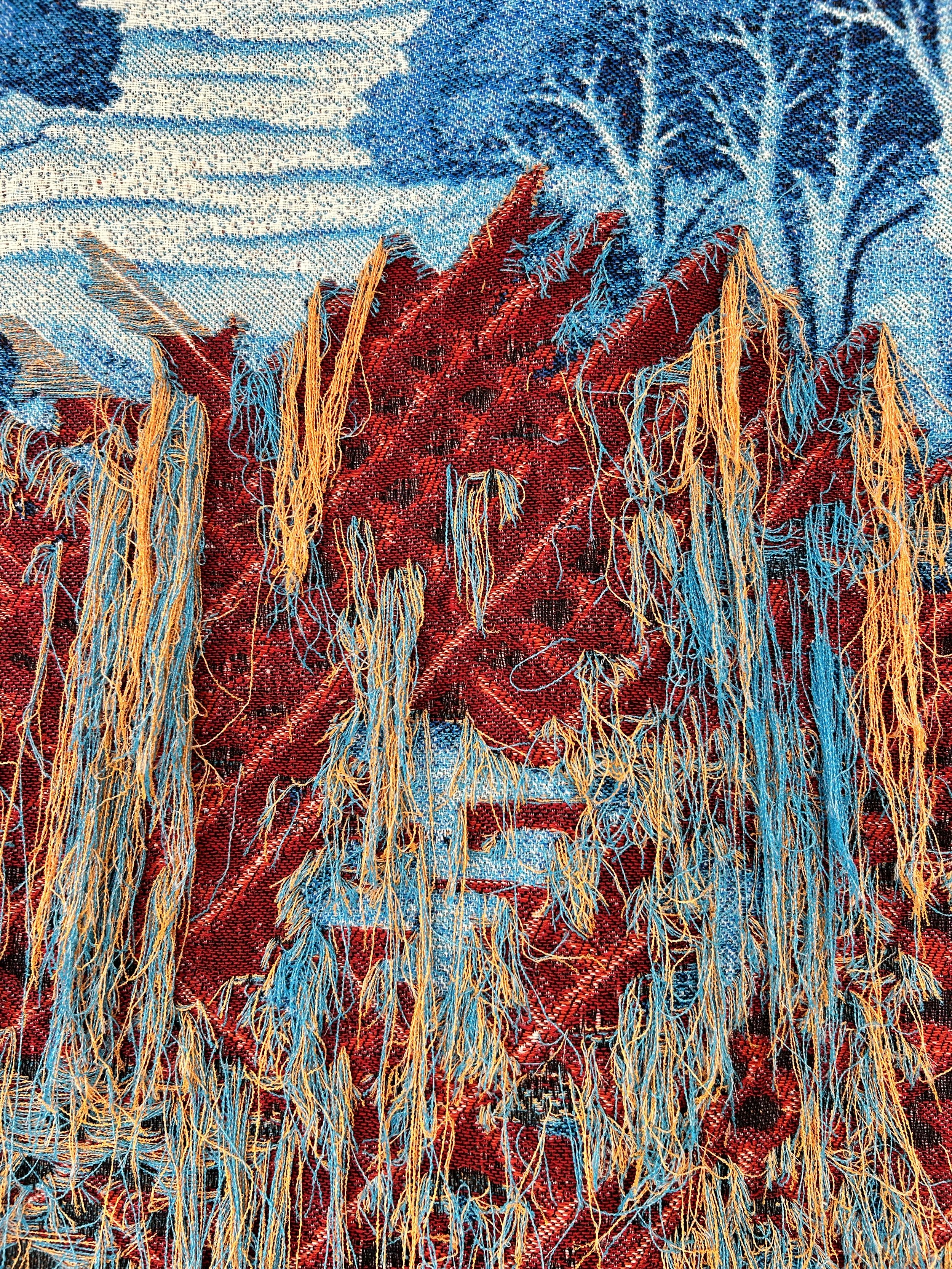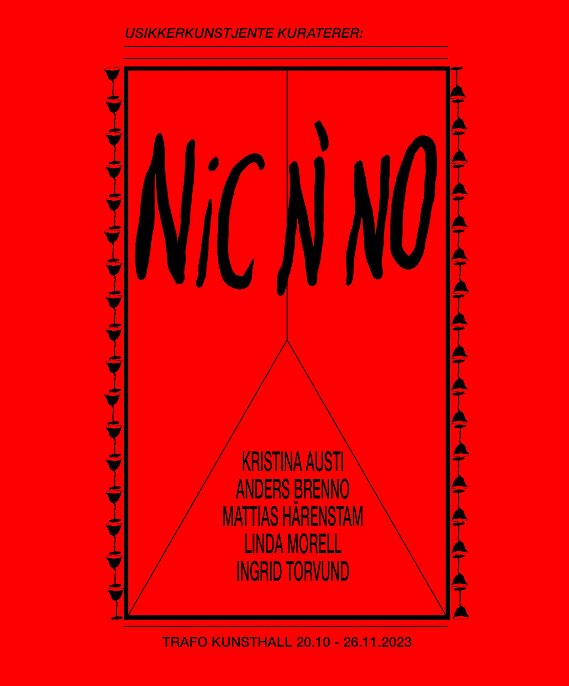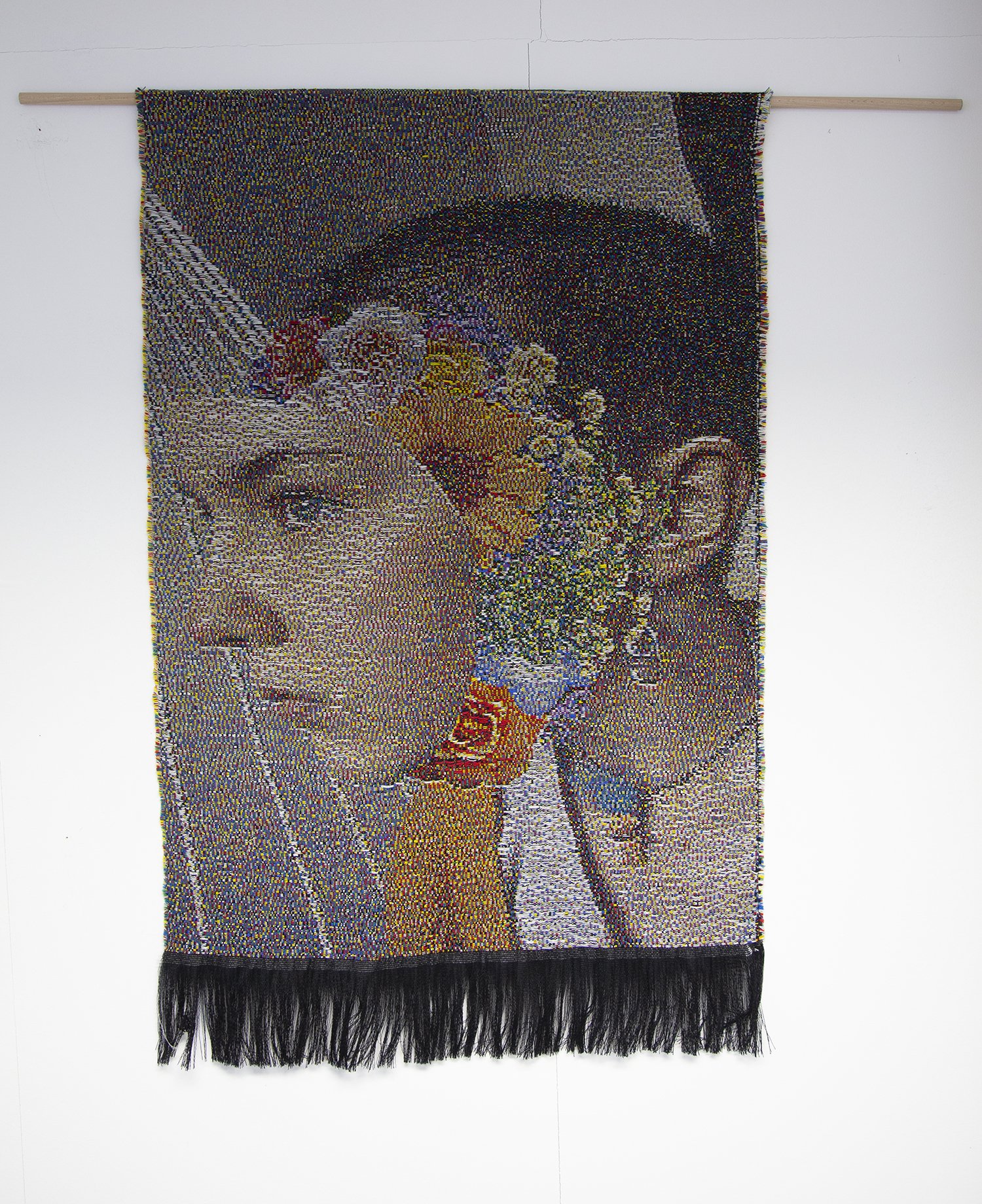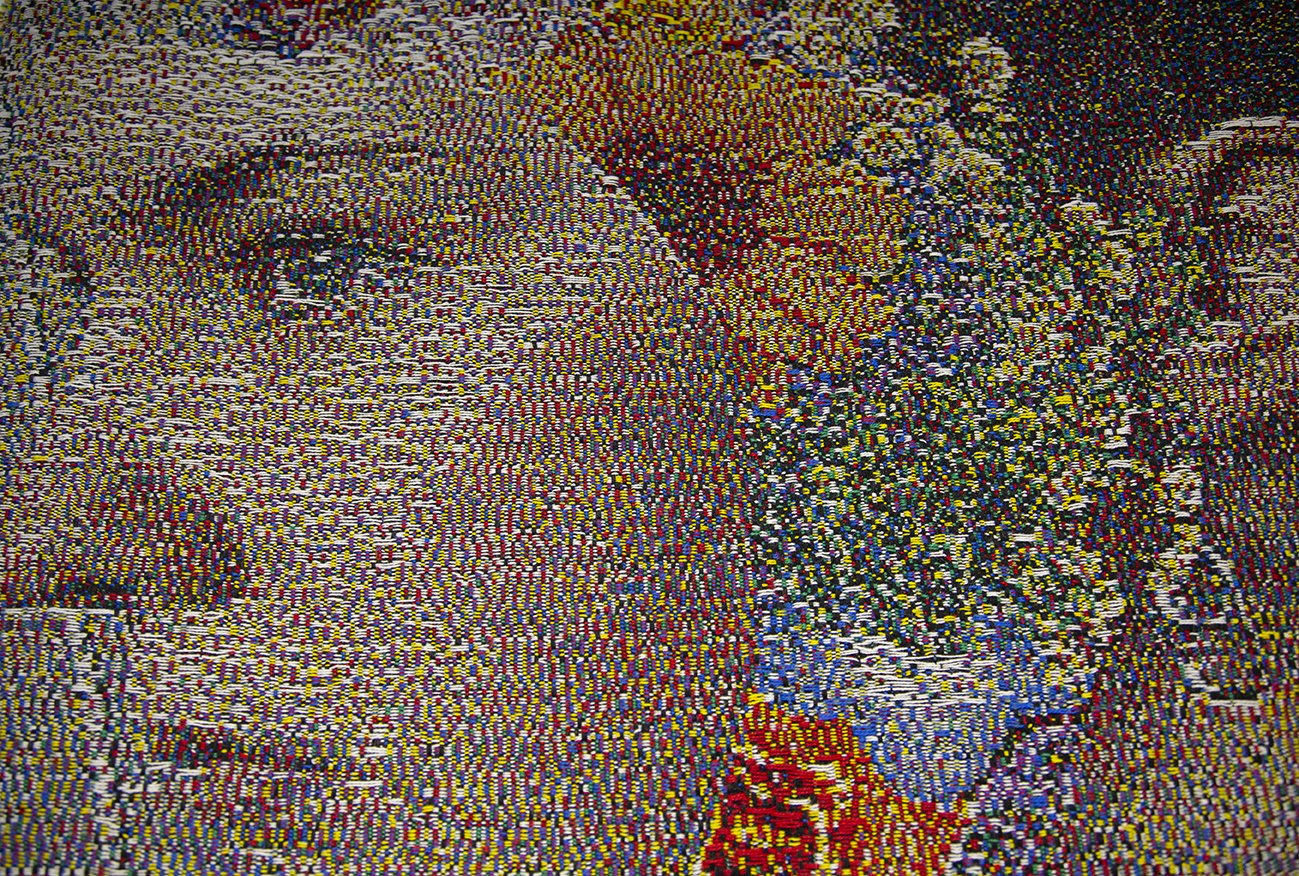Speech for the exhibition HYBRID I by Kristina Aust written by Kirsti van Hoegee
Tale til utstillingen HYBRID I av Kristina Austi
Soft galleri (Oslo)
29. februar - 7. april 2024
Alt du ser er nytt
Du åpner øynene, plasserer kroppen i en våken posisjon, kjenner hvordan nervefibrene slynger seg som røde tråder gjennom kroppen. I det føttene treffer det kalde gulvet beveger trådene seg oppover beina, via innvollene, kobler seg på vagusnerven og samler seg til en bunt i bakre skallegrop.
Alt du ser er nytt. Som nyanser av noe gjenkjennelig, men samtidig overraskende fremmed.
Du er våken og beveger deg.
Ute i hagen faller epler fra trærne. Det er februar og solene varmer mer enn de pleier. Den ene om dagen og den andre om natten. Treet vokser både dag og natt og bærer lyse epler som faller. Røde tråder binder eplene til treet, som navlesnorer. Som om treet sier at eplene tilhører treet. Men det stemmer ikke. Det kan ikke stemme.
Nede ved havet speiles skyene i vannet, eller er det bølgene som etterligner skyer? Du prøver å forestille deg en sky. Lukker øynene, hører havet som bølger, og tankene dine er ordløse og skyene går i oppløsning.
Alt du ser er nytt. Som nyanser av noe fremmed, men samtidig overraskende gjenkjennelig.
Du vet at bildene i hodet er satt sammen av alt øynene dine har sett. Du kan ikke forestille deg noe som er løsrevet fra erfaringen. Du kan sette sammen informasjonen, du kan veve nye bilder med utgangspunkt i billedbiblioteket som finnes, du kan flette tråder, velge farger, mate hjernen med bortglemte minner fra drømmer og virkelighet. Du kan smake prinsessens tårer, du kan flykte til det forheksede slottet.
Vannet sier: Svøm her, svøm her, lille gutt, jeg vil gi deg hvit skjorte og et rødt bånd.
Men var ikke det røde båndet eple sitt?
Bak trærne skimter du byen. De høye bygningene med tårn og spirer som vokser seg større og større for hver dag som går. De vokser ned mot vannet, ned mot havet hvor skyene bølger og dyrene danser. Epletrærne var der først, og nå flettes de røde båndene inn i bygningene, binder naturen sammen med det menneskeskapte som vevbindinger i fritt fall. Som arkitektoniske renningstråder.
Alt du erfarer er nytt. En tilstand av kjenthet ledsaget av et element av ukjenthet.
Du kan ikke forestille deg noe som er løsrevet fra erfaringen.
Et ord gir ingen mening om det ikke kan festes til en forestilling. Du spør den kunstige intelligensen hva ordet KULANTIFA kan bety. KI svarer:
Ordet "kulantifa" virker å være et oppdiktet ord uten noen spesifikk betydning i norsk eller engelsk. Hvis det er et nylig skapt ord eller et ord fra et fantasyspråk eller oppdiktet språk, kan betydningen være basert på konteksten der det ble skapt eller brukt. Uten kontekst kan det være vanskelig å tilskrive en nøyaktig betydning til et slikt ord. Hvis det er et oppfunnet ord, kan du gi det den betydningen du ønsker, eller bruke det som et kreativt element i en historie eller en samtale.
Du ser ulven i havet og lurer på om den ser på deg med hodet som er festet til halsen eller med hodet som er festet der halen skulle vært. Du gir den navnet KALUNTIFA og umiddelbart har ordet et tilhørende bilde i din bevissthet.
Alt du ser er nytt. Det manifesterer seg som en subtil forandring, en ny tolkning, en unik kombinasjon av kjente elementer.
Du fortsetter å mate bevisstheten med umulige kombinasjoner, med nye tråder, med dikt og folkeeventyr. Du vever en ny verden, en verden hvor baksiden er like virkelig som fremsiden.
En verden av DNA tråder spent opp i en renning. Et parallelt univers, hvor avstanden mellom de to er konstant. Der lyse epler modnes i nattsolen, der en ensom ulv symboliserer alt som eksisterer i det bevisste.
Hvilke betingelser skal til for at bevissthet oppstår? Den subjektive opplevelsen av å være våken.
Du er våken og beveger deg.
KI sier: Bevissthet er knyttet til vår evne til å oppfatte, forstå, føle, og reagere på verden rundt oss, samt å være klar over vår egen eksistens og mentale tilstand.
Du aksepterer den eksisterende tilstanden. Solene møtes to ganger i døgnet, og lyset er overveldende. De arkitektoniske bindingene fungerer som et filter for det sterke lyset, og du kan se bølgene for det de er. To ganger i døgnet er bølgene bølger. Og det er da dyrene våkner, det er da de kan danse uten å synke, for bølgene blir faste og skyggene harde.
Alt du ser finnes. Lys blir til bilder, blir til forestillinger, blir til erfaringer, blir til minner, blir til noe som kan hentes frem igjen, til noe som kan videreformidles, til kollektiv bevissthet. Du stryker ulven mot hårene og han slikker deg med halen.
Vannet sier: Svøm her, svøm her, lille gutt, jeg vil gi deg hvit skjorte og et rødt bånd.
Lysende epler stiger mot skyene, gjennom bygninger og videre oppover. De vever sine tråder sammen og skaper en verden der alt og ingenting sameksisterer. Livsveven, med løse tråder og bølgende skyer. Kroppens vev, dyrenes vev, plantenes vev. Alt bindes sammen og alt oppløses. Og du fortsetter å mate veven, og veven gir deg tilgang på all samlet kunnskap, og du føler du mister balansen, at de røde trådene drar deg med, at du ikke lengre kan kontrollere retningen. Du overgir deg.
Du overgir deg til vevens uforutsigbare univers, der hvor trådene ustoppelig skaper nye bindinger, der knuter oppløses og din bevissthet må gi slipp. Du står med tråden i hånden og aksepterer at i det du har forestilt deg et bilde vil det aldri forsvinne. Du er i en tilstand uten endepunkt, uten rom og tid, i fri flyt, kun fastholdt av den røde tråden.
Røde tråder binder epler til treet, binder mennesker til hverandre, til verden, som navlesnorer som aldri blir klippet. Som om treet sier at eplene tilhører treet. Som om jorden sier at mennesket tilhører jorden.
Men det stemmer ikke. Det kan ikke stemme.
For alt du ser er nytt. Som nyanser av noe gjenkjennelig, men samtidig overraskende fremmed.
Kirsti van Hoegee
Februar 2024







































































































